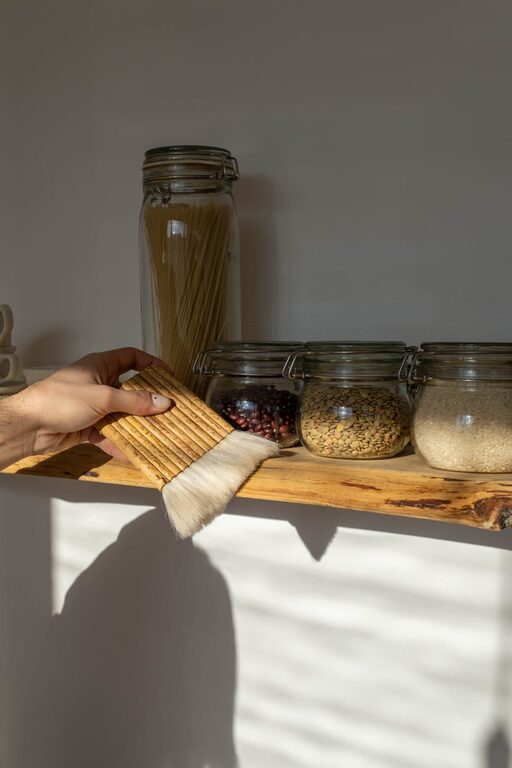Keeping your fridge and pantry tidy is a simple way to improve the efficiency of your kitchen, reduce food waste, and enjoy a fresh cooking space. An organized fridge and pantry help you find what you need quickly, plan meals better, and even save money by avoiding duplicate purchases. Whether you’re starting fresh or need to revamp your current system, this guide will walk you through practical steps to keep these essential areas neat and inviting.
Why Keeping Your Fridge and Pantry Tidy Matters
Before diving into the how, it’s good to understand why tidiness plays a key role in kitchen management:
– Food Safety: A clean and organized fridge reduces the chance of cross-contamination and spoilage.
– Ease of Use: When everything has a place, meal prep becomes quicker and less stressful.
– Waste Reduction: Seeing all your food clearly helps you use items before they expire.
– Cost Savings: Avoid buying duplicates and make shopping lists based on what you really need.
With these benefits in mind, let’s explore how to maintain tidiness day-to-day.
Step 1: Clear Everything Out and Clean
Start with a blank slate for the best results.
- **Empty your fridge and pantry:** Remove all items so you can sort through everything.
- **Check expiration dates:** Toss expired or spoiled foods.
- **Clean shelves and drawers:** Use a mild detergent or a mixture of water and vinegar to wipe down surfaces. Dry completely.
- **Assess storage containers:** Discard cracked or mismatched containers and lids.
Cleaning first helps create an inviting space and prevents odors.
Step 2: Group Similar Items Together
Organizing by category makes it easier to find what you need.
For the Fridge:
– Dairy products (milk, cheese, yogurt)
– Meats and seafood (use meat drawer if available)
– Fruits and vegetables (separate crisper drawers if possible)
– Condiments and sauces
– Beverages
For the Pantry:
– Baking supplies (flour, sugar, leavening agents)
– Canned goods
– Grains and pasta
– Snacks
– Spices and seasonings
Use bins, baskets, or clear containers to keep these groups together.
Step 3: Use Clear Storage Containers
Investing in see-through containers makes a big difference:
– Keeps food fresh longer by sealing out air.
– Allows you to see contents instantly.
– Helps save space by stacking neatly.
– Makes it easier to measure quantities at a glance.
Label containers to track what’s inside and when you opened or bought the item.
Step 4: Arrange Items by Frequency of Use
Keep your daily staples front and center:
– Place frequently used items at eye level or the most accessible shelves.
– Store rarely used items higher up or in the back.
– Rotate older items toward the front (“first in, first out”) to minimize waste.
For pantry shelves, this prevents clutter by ensuring you regularly see and use your supplies.
Step 5: Create Zones for the Fridge and Pantry
Zoning means designating areas for specific functions or food types.
Fridge Zones:
– Top Shelves: Ready-to-eat foods, leftovers, drinks.
– Middle Shelves: Deli meats, cheeses.
– Bottom Shelves: Raw meat and fish (in sealed containers).
– Drawers: Fruits and veggies.
– Door: Condiments and small bottles (temperature fluctuates here).
Pantry Zones:
– Dedicated space for breakfast items, like cereals and oats.
– A baking corner for flour, sugar, and mixes.
– A snack section for chips and crackers.
– A spice rack or organizer for seasonings and small jars.
Having zones makes it easier to keep track and put items back correctly.
Step 6: Maintain with Weekly Quick Checks
A little maintenance goes a long way.
– Weekly scans: Quickly check for expired or spoiled items.
– Wipe down sticky spots: Prevent build-up before it becomes a chore.
– Restock thoughtfully: Write down items you need to buy instead of impulse buying.
– Rearrange as needed: Adjust zones or container choices for better efficiency.
Keeping a regular habit prevents messes from piling up and keeps your system running smoothly.
Extra Tips for Long-Term Success
– Use shelf liners for easier cleaning.
– Store open snacks in airtight containers to retain freshness.
– Freeze surplus items before they spoil.
– Use baskets or pull-out bins in the pantry for easy access to smaller packages.
– Avoid overcrowding; give items space to breathe.
Conclusion
A tidy fridge and pantry don’t just look good—they improve your whole cooking routine. By cleaning regularly, grouping items, using clear containers, and maintaining zones, you’ll enjoy a fresh, organized kitchen that makes meal prep a pleasure. Start small, stay consistent, and watch how a little organization makes a big difference!

